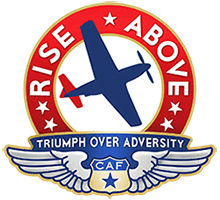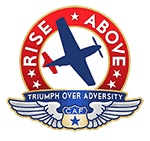
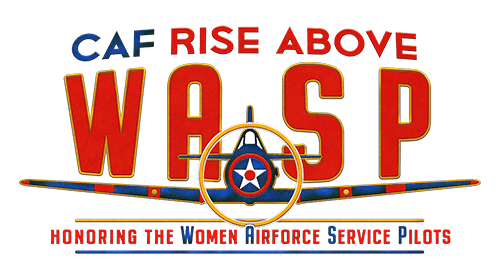
As civilians the WASP contracted by the Army, they were liable for other costs if the army base did not have quarters or mess they could use. This was not the case in the regular army. WASP were not extended the same benefits as men either, the women who were killed during the program could not be buried with military honors, and their bodies were shipped home at the expense of their families and friends.
Thirty-eight of these women died in their service, 11 in training and 27 during missions.
T – Trainee A – Active duty
Click on the names link to read their profile story.

Jane Dolores Champlin (T)
May 14, 1917 – June 3, 1943
Class: 43-W-4
Entered Army Air Force flight training: Avenger Field, Sweetwater, Texas, February 21, 1943
Jane heard about Jacqueline Cochran’s WASP recruitment effort while living in St. Louis where she was working for the Railway Express Agency. She promptly quit her job and took up flying almost full time to get the required hours and used up all her savings for two nose operations to correct a sinus and breathing problem. She was able to pass the AAF physical and was in training at Sweetwater when she lost her life in Westbrook, TX on June 3, 1943.
This was the first fatal crash at Avenger Field in Sweetwater, Texas.
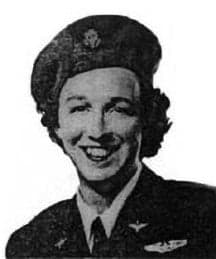
Susan Parker Clarke (A)
August 5, 1918 – July 4, 1944
Class: 44-W-2
Entered Army Air Force flight training: Avenger Field, Sweetwater, Texas, September, 1943 Graduated: March 11, 1944
Assignment: Ferry pilot
Assigned Bases: New Castle Army Air Base (Wilmington, Del.) and Fairfax Army Air Field (Kansas City, Kan.)
Planes flown: PT-19, BT-13, AT-6, B-25, BT-15
WASP Susan Clarke was killed on July 4, 1944 while ferrying a BT-13 when it crashed near Columbia, South Carolina. Those who saw the crash reported nothing unusual preceded the crash. There was speculation about carbon monoxide in the cockpit but that could not be substantiated.
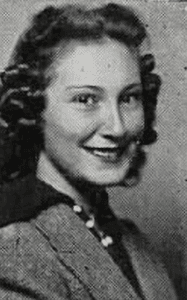
Marjorie Laverne Davis (T)
December 22, 1922 – October 16, 1944
Class: 44-W-9
Entered Army Air Force flight training: Avenger Field, Sweetwater, Texas, April 13, 1944
WASP Trainee Marjorie Davis was killed on the night of October 16, 1944 while on a cross country training flight in an AT-6 near Walnut, Mississippi.
Margie was the last WASP to die in training.
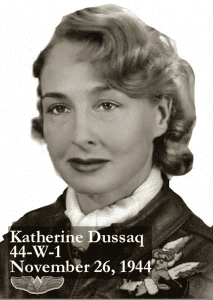
Marjorie Doris Edwards (T)
September 28, 1918 – June 13, 1944
Class: 44-W-6
Entered Army Air Force flight training: Avenger Field, Sweetwater, Texas, January 8, 1944
Marjorie was just weeks away from graduation from training at Sweetwater which was scheduled for August 4, 1944. She was on a cross-country training flight from Vernon to Amarillo when the engine of the AT-6 she was flying quit. She bailed out, but according to reports, although she pulled the parachute release, low altitude prevented the chute from opening properly.
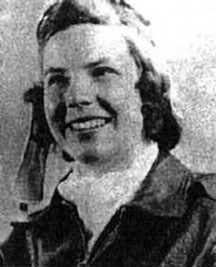
Jayne Elizabeth Erickson (T)
April 14, 1921 – April 16, 1944
Class: 44-W-6
Entered Army Air Force flight training: Avenger Field, Sweetwater, Texas, January 8, 1944
WASP Trainee Jayne Erickson while flying an AT-6, she was killed in a mid-air collision in the traffic pattern at Avenger Field on April 16, 1944.
Jayne and Mary Howson, class 44-W-4, were both training on this final day of their lives. Elizabeth is just about to complete her first solo in an AT-6 and is also planning to land. Mary had been on a long cross-country flight in an AT-6 and was preparing to land at Avenger Field. They are approaching Avenger Field from different directions and they are on a collision course. Elizabeth is busy getting ready to do practice landing. Mary is looking into the Sun. They collide. Elizabeth fell to the ground in her plane. Mary bailed out but was too low for her parachute to open.
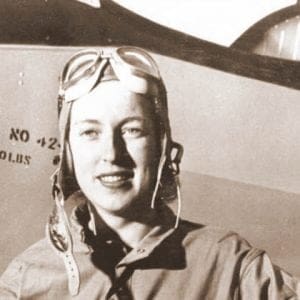
Cornelia Fort (A)
February 5, 1919 – March 21, 1943
WAFS “The Originals”
Planes flown: PT-19, PT-26, BT-13, AT-6
Training Location: New Castle Army Air Base (Wilmington, Del.)
Assigned Bases: New Castle Army Air Base (Wilmington, Del.) AND Love Field (Dallas, Tex.)
Cornelia Fort was killed on March 21, 1943 in a mid-air collision near Abilene, Texas, while on a ferrying mission in a BT-13. She was the first woman pilot to lose her life while ferrying a military aircraft for her country.
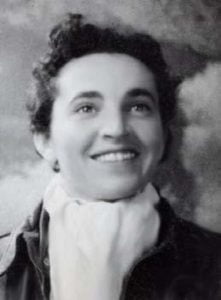
Frances Fortune Grimes (A)
1914 – March 27, 1944
Class: 43-W-3
Entered Army Air Force flight training: Avenger Field, Sweetwater, Texas, January 15, 1943 and Houston Municipal Airport, Texas
Graduated: July 3, 1943
Assignment: Ferry pilot
Assigned Bases: Love Field (Dallas, Tex.) and Camp Davis Army Air Field (N.C.)
Planes flown: A-24 and A-25
Initially, Frances reported to Love Field, Dallas, Texas. Later she was transferred to Camp Davis, N.C.
WASP Frances Grimes was killed shortly after take-off from Otis Field. The aircraft was an RA-24B, (42-54552), the army’s version of the U.S. Navy’s SBD Dauntless dive bomber. Shortly after taking off, the plane developed engine trouble and dove into the ground.
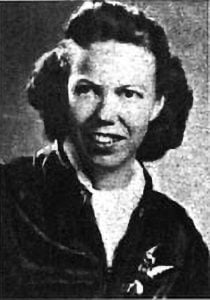
Mary E. Hartson (A)
January 11, 1917- August 14, 1944
Class: 43-W-5
Entered Army Air Force flight training: Avenger Field, Sweetwater, Texas, April 6, 1943
Graduated: September 11, 1943
Assignments: Engineering test pilot, Administrative flying, Instrument Instructor
Assigned Bases: New Castle Army Air Base (Wilmington, Del.), Dodge City Army Air Base (Kan.) and Coffeyville Army Air Base (Coffeyville, Kan.)
Planes flown: BT-13, PT-19, B-26
Staff Sergeant Orville Eitzen joined Mary for a test flight of a BT-13 on August 14, 1944 to check the radio equipment. The weather was fair but about 15 miles north of Perrin Army Air Base near Sherman, Texas, they spun in. The cockpit was open and their seatbelts were undone indicating they were trying to get out, but they were too late. Later there were some men, especially those not working directly with the WASP, who blamed Mary for the accident.
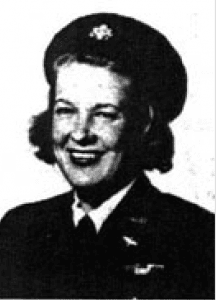
Mary Holmes Howson (T)
February 16, 1919 – April 16, 1944
Class: 44-W-4 Trainee
Entered Army Air Force flight training: Avenger Field, Sweetwater, Texas, November 1, 1943
On April 16, 1944, while returning from a cross-country flight in a PT-19, WASP Trainee Mary Howson was killed in a mid-air collision in the traffic pattern at Avenger Field.
Mary Howson and Jayne Elizabeth Erickson, class 44-W-6, were both training on this final day of their lives. Mary had been on a long cross-country flight in an AT-6 and was preparing to land at Avenger Field. Elizabeth is just about to complete her first solo in an AT-6 and is also planning to land. They are approaching Avenger Field from different directions and they are on a collision course. Elizabeth is busy getting ready to do practice landing. Mary is looking into the Sun. They collide. Elizabeth fell to the ground in her plane. Mary bailed out but was too low for her parachute to open.
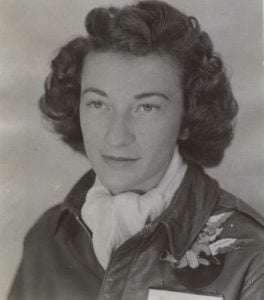
Edith “Edy” Clayton Keene (A)
December 19, 1920 – April 25, 1944
Class: 44-W-1
Entered Army Air Force flight training: Avenger Field, Sweetwater, Texas, August 9, 1943
Graduated: February 11, 1944
Assignments: Training cadet navigators, Towing targets, Ferrying, Administrative
Assigned bases: Hondo Army Air Field (Tex.) and Moore Army Air Base (Mission, Tex.)
Planes flown: PT-19, BT-13, AT-6, C-45, UC-78
On an almost perfect afternoon for flying, Edith was passenger in an AT-6. The pilot was putting the plane through standard flight maneuvers including barrel rolls and loops. While trying to pull out of a dive, a portion of one wing was torn loose. The plane spun out of control. The pilot ejected to safety, but Edith was pinned in the rear cockpit and unable to get out.
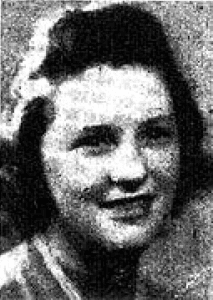
Kathryn Barbara Lawrence (T)
December 3, 1920 – August 4, 1943
Class: 43-W-8
Entered Army Air Force flight training: Avenger Field, Sweetwater, Texas, July 10, 1943
WASP Trainee Kathryn Lawrence was killed on August 4, 1943, while flying a PT-19A #42-34157 on a routine training flight at Avenger Field. She bailed out, however, her parachute failed to open. There were no witnesses to the crash and a cause was not determined. The Form 1-A indicated, “Hole in L. Wing”.
Kay Lawrence was finally given official recognition for her service to her country. On October 14, 2006, “The air was cool and crisp, and the sun filtered through trees that have lost their leaves. The gun salute was heard and taps sounded throughout the cemetery. “
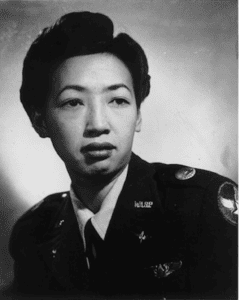
Hazel Ying Lee (A)
August 24, 1912 – November 25, 1944
Class: 43-W-4
Entered Army Air Force flight training: Avenger Field, Sweetwater, Texas, February 21, 1943 and Houston Municipal Airport, Texas
Graduated: Avenger Field, May 28, 1943
Assignment: Ferry pilot
Assigned Bases: Romulus Army Air Base, Michigan
Planes flown: B-13, PT-19, C-47, P-63
WASP Hazel Ying Lee was the first Chinese-American woman to fly for the United States military. While ferrying a P-63, WASP Hazel Ying Lee was killed in a mid-air collision on the final approach at Great Falls Army Air Field, Montana on November 23, 1944. Three days after news of Lee’s death reached her family in Portland, the Lee family received word that her brother Victor, who was with the US Army in France, had been killed in action.
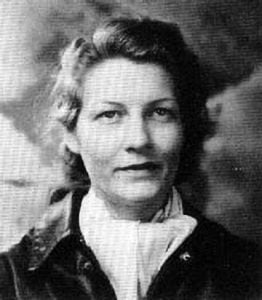
Paula Ruth Loop (A)
August 25, 1916 to July 7, 1944
Class: 43-W-2
Entered Army Air Force flight training: Houston Municipal Airport, Houston, Texas, December 19, 1942
Graduated: Avenger Field, May 28, 1943
Assignment: Ferry pilot
Assigned bases: Romulus Army Air Base (Mich.) and Fairfax Army Air Field (Kansas City, Kan.)
Planes flown: BT-15, C-47, B-24, B-25
Romulus Army Air Base was Paula’s first duty station after graduation from basic on May 28, 1943. From here, she reported to the 33rd Flight Group at Fairfax Field, Kansas City, Missouri. During delivery of 3 BT-13s on July 7, 1944, Paula and 2 other pilots were killed. There were strong winds with severe gusts about 30 miles from Medford, Oregon. Paula was probably caught in a strong mountain slope downwind that took her into the trees where her plane burned.
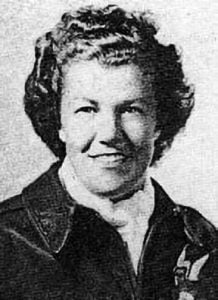
Alice E. Lovejoy (A)
August 15, 1915 – September 13, 1944
Class: 43-W-5
Entered Army Air Force flight training: Avenger Field, Sweetwater, Texas, April 6, 1943
Graduated: September 11, 1943
Assignment: Ferry pilot
Assigned bases: Romulus Army Air Base (Mich.)
Planes flown: PT-19 and C-47
Alice reported to the 3rd Ferrying Group, Romulus Army Air Base, in Romulus, Michigan after graduation from basic training in Sweetwater. After spending a year there, she was sent to Pursuit School in Brownsville, Texas. While flying in formation with another AT-6C #41-32182 on September 13, 1944 there was a mid-air collision. Alice’s instructor was able to bail out but Alice was killed.
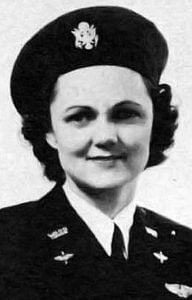
Peggy Wilson Martin (A)
February 8, 1912 – October 3, 1944
Class: 44-W-4
Entered Army Air Force flight training: Avenger Field, Sweetwater, Texas, November 1, 1943
Graduated: May 23, 1944
Assignment: Engineering test pilot
Assigned bases: Gardner Army Air Base (Taft, Calif.) and Marana Army Air Field (Ariz.)
Planes flown: PT-17, BT-13
On October 3, 1944, Peggy climbed into a BT-13 Valiant with Marion Hagan (44-W-6). Marion had graduated from Sweetwater two months before, and Marana Air Base was her first assignment. She was riding as an observer as Peggy gunned the plane’s engine for takeoff. There was something sluggish in the way the engine struggled to get the Valiant into the air. About 11 miles from the field, the engine suddenly lost all of its oil. Peggy tried to turn the airplane toward a nearby auxiliary airfield, but with no power to keep the craft flying, it stalled and crashed. Marion survived, but had severe injuries and suffered for weeks in hospitals before recovery. Peggy only lived for an hour after arriving at the hospital.
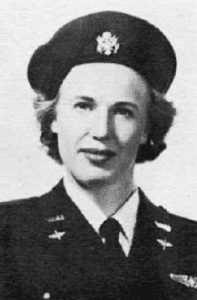
Lea Ola McDonald (A)
October 12, 1921 to June 21, 1944
Class: 44-W-3
Entered Army Air Force flight training: Avenger Field, Sweetwater, Texas, October, 1943.
Graduated: Avenger Field, Sweetwater, Texas on April 5, 1944
Assignments: Simulated strafing, searchlight and tracking missions, Radio controlled target flying, Low altitude night missions, Laying smoke screens.
Assigned bases: Biggs Army Air Field, El Paso, Texas
Planes flown: PT-17, BT-13, AT-6, AT-7, AT-11, C-45, B-26
WASP Lea McDonald was killed near El Paso, Texas while flying an A-24 attack bomber on a practice flight on June 21, 1944.
While on a training flight in the B-24B, she crashed a few miles from Biggs AAFB. The accident was reported as caused by mechanical failure. One account states this was her first solo in the B-24B, and that she crashed on landing.
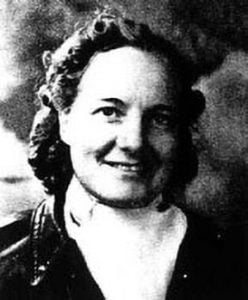
Virginia Caraline Moffatt (A)
May 31, 1912 – October 5, 1943
Class: 43-W-2
Entered Army Air Force flight training: Houston Municipal Airport, Houston, Texas, December 19, 1942
Graduated: Avenger Field, Sweetwater, Texas, May 28, 1943
Assignment: Ferry pilot
Assigned bases: Long Beach Army Air Base (Calif.)
Planes flown: BT-13 and PT-19
It was late in the afternoon when 31-year-old Ginny began her landing approach to the runway. Perhaps tired from previous deliveries she had made that day, she came in too hard and overshot her landing. She began her climb into a go-around for another try. About a mile out from the airfield she started a turn, but at too steep of an angle. The plane stalled and spiraled into a dive, crashed in a walnut orchard, and burst into flame. Neither the Sweetwater nor the Avenger Field newspapers mentioned her death.
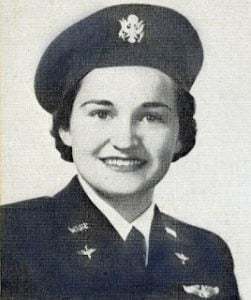
Beverly Jean Moses (A)
December 21, 1922 – July 18, 1944
Class: 44-W-5
Entered Army Air Force flight training: Avenger Field, Sweetwater, Texas, December 7, 1943
Graduated: June 27, 1944
Assignment: Utility/administrative pilot
Assigned bases: Las Vegas Army Air Field (Nev.)
Planes flown: PT-17, BT-13, AT-6, AT-10, B-26, P-39
On June 27, 1944 Beverly graduated from basic training at Avenger Field, Sweetwater, Texas. Her orders took her to Las Vegas Army Air Field, Nevada. Based on the flip of a coin between Beverly and Mildred Taylor, Beverley won the copilot position for an instrument training flight with four others in an AT-11 on July 18, 1944 in the mountains near Las Vegas. The pilot was Lt. Frank Smith. During the training mission, the flight was redirected to search for a downed parachute near Mt. Charleston. Later that day, Mildred reported back from her mission in a B-17 and couldn’t find Beverley. Maybe she went on a night mission? Mildred began checking around but no one knew where the AT-11 was. It was now midnight. A search was started early the next day and the plane was found pancaked into the side of a mountain. The plane was mostly intact, but the center section was burned and all 6 personnel were killed.
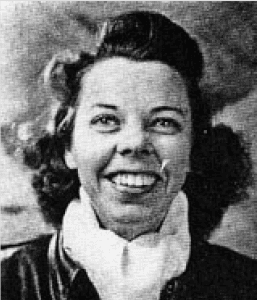
Dorothy Mae “Dottie” Nichols (A)
September 26, 1916 – June 11, 1944
Class: 43-W-2
Entered Army Air Force flight training: Houston Municipal Airport, Houston, Texas, December 19, 1942
Graduated: Avenger Field, Sweetwater, Texas, May 28, 1943
Assignments: Ferry pilot
Assigned bases: Long Beach Army Air Base (Calif.)
Planes flown: P-39, P-40, P-47
While ferrying a P-39 from Buffalo, New York, WASP Dorothy Nichols was killed just after take-off outside Bismarck, North Dakota on June 11, 1944. An accident investigator reported that Dottie was killed by the control stick going through her forehead before the flames engulfed the plane. Jary Johnson, a WASP flying another P-39 with Dorothy, escorted Dorothy’s body back to Los Angles for the funeral, which was attended by both Nancy Love and Jackie Cochran.
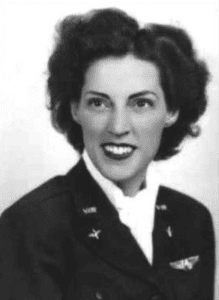
Jeanne Lewellen Norbeck (A)
November 14, 1912 – October 16, 1944
Class: 44-W-3
Entered Army Air Force flight training: Avenger Field, Sweetwater, Texas, October, 1943
Graduated: April 15, 1944
Assignment: Engineering test pilot
Assigned bases: Dodge City Army Air Base (Kan.) and Shaw Army Air Base (Sumpter, S.C.)
Planes flown: PT-17, BT-13, AT-6
WASP Jeanne Norbeck was killed near Shaw Army Air Base, a BT-13 Modification Center, on October 16, 1944, while flight testing a BT-13.
The aircraft unexpectedly rolled, went into a spin, and smashed upside down into the ground in a fiery crash.
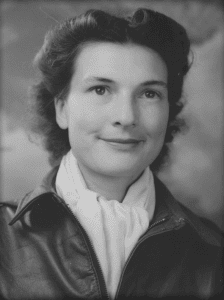
Margaret Sanford Oldenburg (T)
July 29, 1909 – March 7, 1943
Class: 43-W-4
Entered Army Air Force flight training: Houston Municipal Airport, Houston, Texas, February 16, 1943
WASP Trainee Margaret Oldenburg was the first fatality in the WASP program. She and her instructor were killed on a routine training flight in a PT-19 on March 7, 1943 at the training base at Houston.
The weather in Houston had been terrible and the planes were grounded. When the weather cleared, the students from 43-4 were eager to practice spins in the PT-19s. But something went wrong with one of the flights and Margaret and her instructor dove straight into the ground. The training command ordered that the accident be kept quiet. Since these women were not considered as military at the time, they were not entitled to burial expenses or survivor’s benefits. Jacquelin Cochran took care of all the expenses and Mrs. Deaton escorts Margaret’s body home.
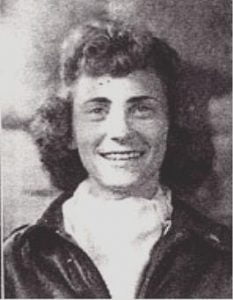
Mabel Virginia Rawlinson (A)
March 19, 1917 – August 23, 1943
Class: 43-W-3
Entered Army Air Force flight training: Houston Municipal Airport, Houston, Texas, January 15, 1943 and Avenger Field, Sweetwater, Texas
Graduated: Avenger Field, Sweetwater, Texas, July 3, 1943
Assigned bases: New Castle Army Air Base (Wilmington, Del.)
Planes flown: A-24
WASP Mabel Rawlinson was killed in the crash of an A-24 attack bomber on August 23, 1943.
After completing her basic training, Mabel Rawlinson reported to Camp Davis Army Air Field in North Carolina. Here she was to support anti-aircraft artillery training by towing targets behind A24s. She first received additional training for the A24s including night flying. One night, shortly after takeoff the plane developed mechanical problems and she and her instructor had to return. While coming in on final approach, the landing gear of her A24 hit the tops of the tall sea pines that surrounded the field. The plane nosed down, hit the ground, and split in two. The instructor in the backseat was thrown clear. Mabel was trapped in the front of the plane as it went up in flames … the canopy release for her cockpit was known not to function from the inside – she was trapped. Here is a summary of the Army Air Force accident report.
The A-24s they were using for tow target training at Camp Davis were worn out from war duty, not well maintained due to lack of parts, and they were using lower octane fuel, 90 vs. 100, than required. Fifteen of the 37 tow target accidents involved the A-24 and 14 of the 37 occurred at Camp Davis. The first 10 accidents at Camp Davis were in A-24s and occurred between 8/6/43 to 11/18/43.
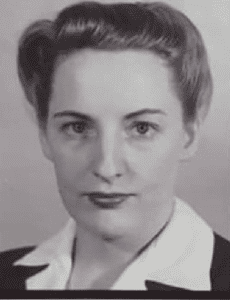
Gleanna Roberts (T)
January 11, 1919 to June 20, 1944
Class: 44-W-9
Entered Army Air Force flight training: Avenger Field, Sweetwater, Texas, June, 1944
Gleanna was out with several in her class, 44-9, training all around Avenger Field. She was north of Lorraine, Texas, and working at low altitude. The PT-17 made a steep turn after take-off. The aircraft stalled, and Roberts evidently could not regain control. The aircraft nosed down and the left wing struck the ground. The aircraft then cartwheeled and was demolished. She had been a WASP for less than three weeks.
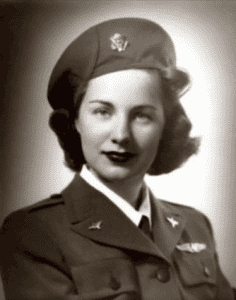
Marie Michell Robinson (A)
May 23, 1924 – October 2, 1944
Class: 44-W-2
Entered Army Air Force flight training: Avenger Field, Sweetwater, Texas, in September, 1943
Graduated: March 11, 1944
Assignments: Ferry pilot, Training bombardiers
Assigned bases: Love Field (Dallas, Tex.) and Victorville Army Air Base (Calif.)
Planes flown: PT-17, BT-13, AT-6, AT-7, AT-11, B-25
Marie died when she was co-piloting B-25D #41-30114 that crashed in the mountains approximately 25 miles west of Victorville, California.The three crew members killed in the crash were:
1st Lt George D Rosado, Pilot, from San Diego, California
WASP Marie N Michell Robinson, Co-Pilot, from Washington, D.C.
SSgt Gordon L Walker, Crew Chief, from Fossil, Oregon
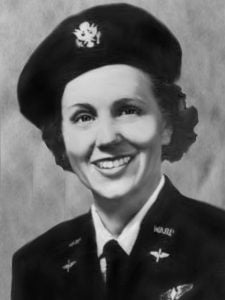
Bettie Mae Scott (A)
July 26, 1921 – July 8, 1944
Class: 44-W-3
Entered Army Air Force flight training: Avenger Field, Sweetwater, Texas, October, 1943
Graduated: April 15, 1944
Assignment: Engineering test pilot
Assigned bases: Waco Army Air Field (Tex.)
Planes flown: B-13, PT-17, AT-6
She was checking a BT-13 on July 8, 1944. She looked over the Form 1-A from the mechanic which was the only indication as to the plane’s flight worthiness. At the end of the runway, she checks the functioning of all the control surfaces and the engine gauges. However, after leaving the ground the plane is in a steep attitude, too steep. At about 100 feet, the plane stalls, turns over, and crashes on its back-killing Bettie instantly. Later investigation would show that mechanics missed defects in the tail section of the aircraft and Bettie never saw them during her walk-around.
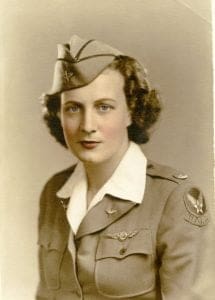
Dorothy E. Scott (A)
February 16, 1920 – December 3, 1943
WAFS “The Originals”
Training Location: New Castle Army Air Base (Wilmington, Del.)Assigned bases: New Castle Army Air Base (Wilmington, Del.) and 5th Ferrying Group at Love Field in Dallas, Texas
Planes flown: PT-19, BT-13, BT-15, AT-6, AT-10
October, 1942, Dorothy Scott was hired as a ferry pilot in the Women’s Auxiliary Ferrying Squadron of the Air Transport Command.
On July 5, 1943, she became a WASP when the WFTD and WAFS merged.
Dorothy started out at New Castle Army Air Base in Wilmington, Delaware and then went to the 5th Ferrying Group at Love Field in Dallas. While stationed at Love, she was sent to Palm Springs Army Air Field for pursuit plane training for the P-39, P-40, and P-47. Initial training started from the rear seat of an AT-6 or BC-1, which simulated the view from a pursuit plane cockpit. On this fateful day, there were several trainers and pursuits in the air. Dorothy had just been cleared to make her final landing. The tower had also cleared a P-39 to come in second. However, one thing had not been taken into account during this landing of both planes: The P-39 was the faster of the two. Without even seeing the BC-1, the P-39 caught up with it and came down on it without ever seeing it.

Margaret June “Peggy” Seip (T)
June 24, 1916 – August 30, 1943
Class: 43-W-5
Entered Army Air Force flight training: Avenger Field, Sweetwater, Texas, April 6, 1943
WASP Trainee Margaret Seip, together with her instructor Calvin Atwood and a fellow class-mate, Helen Severson were only 11 days away from graduation and were thinking about their next assignment as Air Transport Command ferrying pilots. They were with their instructor in an UC-78 on a flight from Sweetwater to Big Springs to practice radio navigation. Helen was flying under the hood at the time of the accident. An accident investigation blamed the crash on structural failure. Later that evening, some of their classmates gathered around a vine that Margaret and Helen had planted in March. It now covered the rear wall of a barracks.
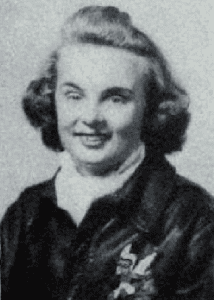
Helen Jo Anderson Severson (T)
November 2, 1918 – August 30, 1943
Class: 43-W-5
Entered Army Air Force flight training: Avenger Field, Sweetwater, Texas, April 6, 1943
WASP Trainee Helen Jo Severson, together with her instructor Calvin Atwood and a fellow class-mate, Margaret Seip were only 11 days away from graduation and were thinking about their next assignment as Air Transport Command ferrying pilots. They were with their instructor in an UC-78 on a flight from Sweetwater to Big Springs to practice radio navigation. Helen was flying under the hood at the time of the accident. An accident investigation blamed the crash on structural failure. Later that evening, some of their classmates gathered around a vine that Margaret and Helen had planted in March. It now covered the rear wall of a barracks.
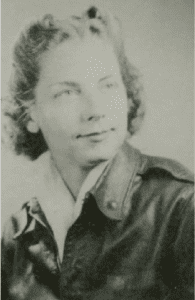
Marie Ethel Sharon (A)
April 21, 1917 – April 10, 1944
Class: 43-W-4
Entered Army Air Force flight training: February 14, 1943 at Avenger Field, Sweetwater, Texas and training at the Houston Municipal Airport, Texas
Graduated: August 7, 1943
Assignment: Ferry pilot
Assigned bases: Long Beach Army Air Base (Calif.)
Planes flown: B-25
WASP Marie Sharon and her instructor were killed on April 10, 1944 near Tecumseh, Nebraska, while flying a B-25 #41-29841 on a night flying instrument training mission.
It was raining at the time of the crash. According to the accident report, the latch on the nose gear door failed, causing the door to come off and hit the propellors on the starboard engine. In conjunction with this, the engine appeared to have failed, thus causing the aircraft to enter into a steep dive.
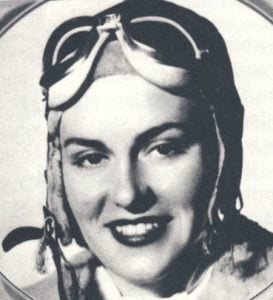
Evelyn Sharp (A)
October 1, 1919 – April 3, 1944
WAFS “The Originals”
Training location: New Castle Army Air Base (Wilmington, Del.)
Assignment: Ferry pilot
Assigned bases: New Castle Army Air Base (Wilmington, Del.)
Planes flown: PT-19, BT-13, BT-15, A-20, B-17, B-25, C-47, P-38, UC-78
October, 1942, Evelyn Sharp was hired as a ferry pilot in the Women’s Auxiliary Ferrying Squadron of the Air Transport Command.
On July 5, 1943 the WFTD and the WAFS became one unit, and all the women military pilots became WASP.
WASP Evelyn Sharp was one of the most experienced women pilots in America, with 2,968 hours of flying time when she became a ferry pilot for the Air Transport Command. She was killed on April 3, 1944 when an engine on the twine-engine P-38 she was ferrying failed on take-off at New Cumberland, Pennsylvania. One minute after take-off and with 700 feet altitude, one of the engines failed. For many pilots, the remaining engine would have torqued the plane over and into the ground. But Evelyn jammed the rudder to counter the effect, turned the plane back toward the field and pancaked the P-38 for a wheels up landing. The plane was not badly damaged, but Evelyn’s neck was broken.
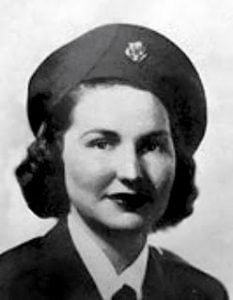
Betty Pauline Stine (T)
September 13, 1921 – February 25, 1944
Class: 44-W-2
Entered Army Air Force flight training: Avenger Field, Sweetwater, Texas, September, 1943
On February 25, 1944, during her last cross-country flight before graduation, WASP Trainee, Betty Stine, was killed when she was forced to bail out of her AT-6 over the mountains near Tucson, Arizona.
The investigating report stated that sparks from the engine exhaust had set fire to the tail of the plane. Just before the plane crashed into a mountain, Betty was spotted by a miner coming down in her parachute. It wasn’t until later that the miner and two others reached Betty. She had been dragged across the rocky terrain by the strong winds and was is very bad shape. She was taken to the base hospital at Blyth where she died.
Very shortly after Betty’s death, a parachute training system was built at Avenger field and twelve hours of instruction were added to basic training.
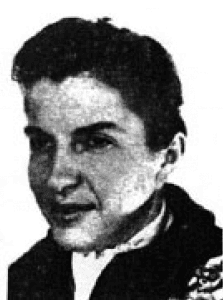
Marian J. Toevs (A)
May 13, 1917 – February 18, 1944
Class: 43-W-8
Entered Army Air Force flight training: Avenger Field, Sweetwater, Texas, July 10, 1943
Graduated: December 17, 1943
Assignment: Engineering test pilot
Assigned bases: Lemoore Army Air Base (Calif.)
Planes flown: PT-19, BT-13, AT-6, BT-15
After graduating on December 17, 1943, from basic training, Marion reported to Lemoore Army Air Base in California. She was only one of two WASP sent there for BT-15 engineering/test flying. On a routine flight from Lemoore to Fresno Marian was killed while flying a BT-13 from Lemoore to Fresno, California, February 18, 1944
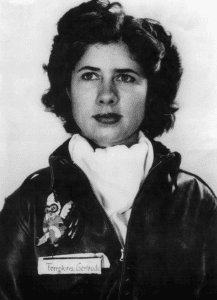
Gertrude ‘Tommy’ Tompkins-Silver (A)
October 16, 1911 – disappeared October 26, 1944
Class: 43-W-7
Graduated: November 13, 1943
Assignment: Ferry pilot
Assigned bases: Love Field (Dallas, Tex.) and Pecos Army Air Base (Tex.)
Planes flown: AT-6, AT-17, UC-78
On October 26, 1944 at 3:42pm Gertrude taxied to one side of the runway prior to her departure to have her cockpit hatch repaired. She apparently departed from Mines Field (Los Angeles International Airport) for Palm Springs, on October 26, 1944, flying a North American P-51D-15-NA Mustang serial number 44-15669. Assigned to the 5th Ferrying Group, 601st Ferrying Squadron, destined for New Jersey.
She never arrived at Palm Springs and due to reporting errors, the tower and air traffic controllers had no copies of her flight plans for the day she was not reported as missing until October 30, four days after her presumed disappearance.
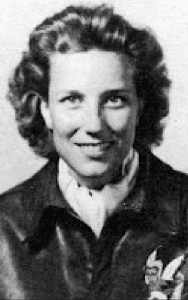
Mary Elizabeth Trebing (A)
December 31, 1920 – November 7, 1943
Entered Army Air Force flight training: Avenger Field, Sweetwater, Texas, February 21, 1943 and training at Houston Municipal Airport, Texas
Graduated: August 7, 1943
Assignment: Ferry pilot
Assigned bases: Love Field (Dallas, Tex.)
Planes flown: PT-19
Mary’s final flight took place on 7 November 1943. Mary had traveled by train to Oklahoma City where she was to pick up a PT-19 training plane and ferry it back to Love Field in Dallas. Enroute, her plane’s engine lost power somewhere in the vicinity of Blanchard, OK. At the time, this was a heavily forested area with only an occasional field where it might have been possible to crash land a plane. Reports later revealed that, without power, there was only one place that offered Mary any hope of a successful landing. To get to the clearing, she would have to go over a farm house and then immediately dive under high-tension electric lines. Mary cleared the farm house but the plane’s vertical stabilizer caught on the electric wires and sent her plane into the ground, nose first. The after-crash report indicated that Mary had ruptured an artery in her neck and that she died instantly.
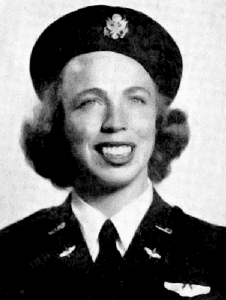
Mary Louise Webster (A)
June 30, 1919 – December 9, 1944
Class: 44-W-8
Entered Army Air Force flight training: Avenger Field, Sweetwater, Texas, March, 1944
Graduated: October 16, 1944
Assignment: Administrative pilot, Engineering test pilot
Assigned bases: Frederick Army Air Field, Frederick, Oklahoma
Planes flown: PT-17, BT-13, AT-6, B-24, UC-78
WASP Mary Louise Webster was a passenger in a UC-78 on a December 9, 1944, flight from Frederick, Oklahoma, to Tulsa. An hour out the UC-78 was flying at 9,000 feet above the clouds, when Crowe noticed ice forming on the wings. He radioed the air controller and received permission to descend; hoping warmer air would keep more ice from forming. Now, deep in the clouds, the aircraft began to fall and Crowe lost control. The UC-78 fell straight down and crashed, killing everyone aboard:
Lieutenant George Crowe at the controls
Sergeant Melvin Clark
WASP Mary Louise Webster
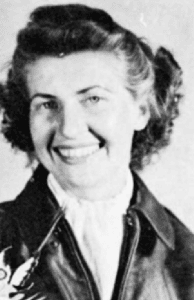
Bonnie Jean Alloway Welz (A)
June 22, 1918 – June 29, 1944
Class: 43-W-6
Entered Army Air Force flight training: Avenger Field, Sweetwater, Texas, April 25, 1943
Graduated: October 9, 1943
Assignments: Tow target pilot, Administration pilot
Assigned bases: Dodge City Army Air Base, Kansas and Harlingen Army Air Field, Harlingen, Texas
Planes flown: B-26
After completing basic training on October 9, 1943, she reported to Dodge City Army Air Base in Kansas, where she received advanced training in the B-26. From here, she reported to Harlingen Army Air Field, where she towed targets for the Flexible Gunnery School.
WASP Bonnie Welz was killed in a BT Valiant aircraft, BT-13A #41-22090, when it crashed on an administrative flight two miles north of Randado, Texas, and approximately 42 miles from Laredo Army Air Field, Texas.
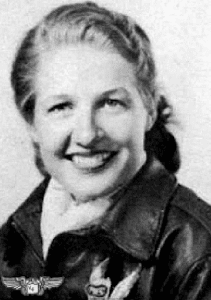
Betty Taylor Wood (A)
March 1921 – September 23, 1943
Class: 43-W-4
Entered Army Air Force flight training: Avenger Field, Sweetwater, Texas, February 14, 1943 and at Houston Municipal Airport, Texas
Graduated: August 7, 1943
Assignment: Tow target pilot
Assigned bases: Love Field (Dallas, Tex.) and Camp Davis Army Air Field, Camp Davis, North Carolina
Planes flown: AT-6, PT-17
Betty went from basic training in Sweetwater to Camp Davis for tow target training. During a landing with the camp’s chaplain on board as a passenger, she had to abort and give the A-24 full throttle to go around for another try. However, the plane rolled and went into the ground. Both Betty and the chaplain were crushed between the canopy and plane.
Sources:
Andy Hailey, son of WASP Lois B. Hailey, Class 43-W-3. Be sure to visit his site as he lists the WASP in the order they died.
